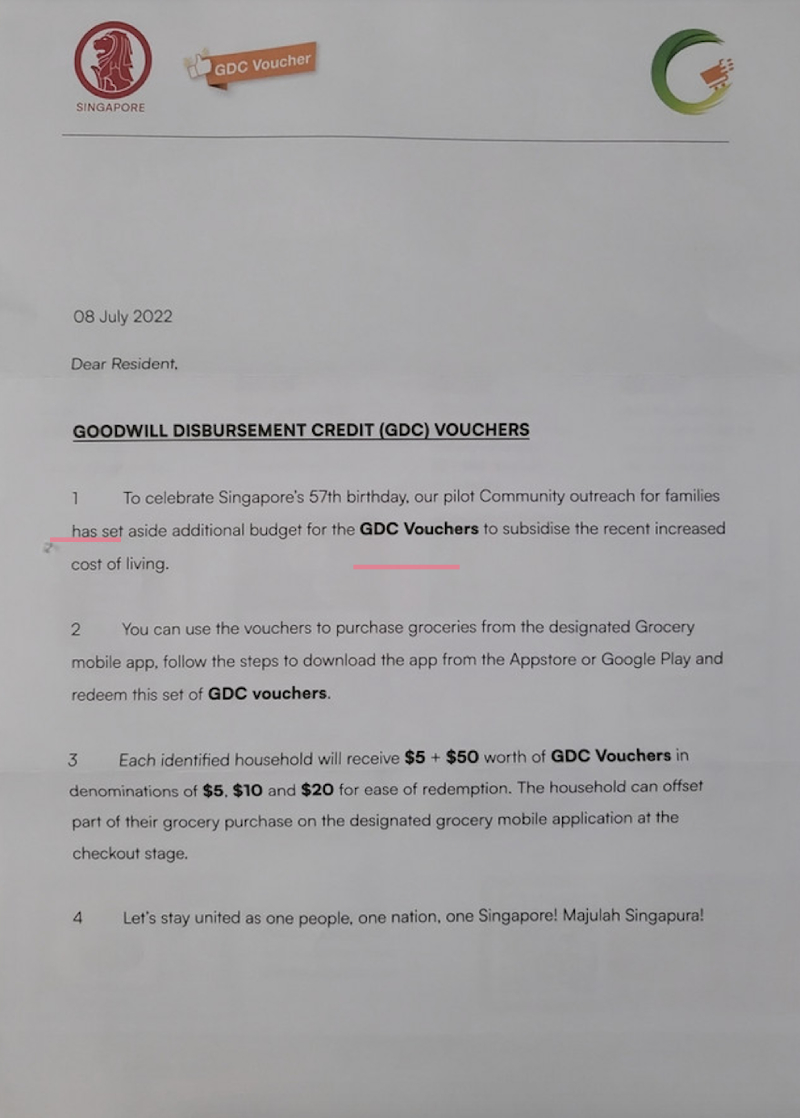GDC or CDC vouchers? Online supermarket's flyers baffle Serangoon and Hougang residents
An online supermarket's marketing campaign has recently baffled some people in Singapore — they thought it was a scam.
Gaigai, an e-supermarket that offers popular snacks from around the region, recently distributed flyers to Serangoon and Hougang residents, and provided instructions on how to redeem their Goodwill Disbursement Credits (GDC) vouchers.
According to the flyer, each "identified household" would receive $55 worth of GDC vouchers to purchase their daily essentials. To redeem these vouchers, they'd have to download the GaiGai app and supply an email address.

Some residents who received the flyers, however, felt the offer was too good to be true and mistook it for a scam, noting that the GDC vouchers sounded rather similar to CDC (Community Development Council) vouchers.
CDC vouchers are distributed by the Government to each Singaporean household to help with daily expenses as part of the Household Support Package. The vouchers, claimed via the CDC voucher website, can be used to purchase goods and services from participating hawkers and heartland merchants.

The residents' concerns are not unfounded, for the police warned the public against fake SMSes for the redemption of CDC vouchers last year.
Responding to the feedback, GaiGai clarified on Monday (Aug 8) that the mailers sent by the company are legitimate.
"We acknowledge that our GDC Voucher marketing campaign has misled certain residents into thinking that we are associated to the Government and we deeply apologise for that matter," they wrote in a notice on their website.
The e-supermarket explained that the vouchers were intended to help Singaporeans cope with the rising cost of living. GaiGai did not represent any government agency, nor are they "in any way affiliated to any government body".
"We hereby sincerely [apologise] for any confusion caused to anyone during this time. We seek to improve our marketing and delivering the best services to our supporters [sic]."
How to spot fake online ads
Some ways to spot fake online ads include checking the domain names of websites and paying attention to minor discrepancies such as amazonnet.com or amaz0n.com which attempt to imitate e-commerce giant Amazon's domain name amazon.com, according to cybersecurity solutions provider ESET.
On a similar note, slight typos or variations in product names might also be a hint that the ad might be fake.
Another tip is to do a quick background search of the retailer or domain name to ascertain if it's legitimate.
Contacting the retailer's customer service before making a purchase can also help to verify the platform's authenticity.
ALSO READ: GrabPay users are falling for fake ads offering cheap iPhones and PS5 consoles; accounts get hijacked
claudiatan@asiaone.com
Disclaimer: The copyright of this article belongs to the original author. Reposting this article is solely for the purpose of information dissemination and does not constitute any investment advice. If there is any infringement, please contact us immediately. We will make corrections or deletions as necessary. Thank you.







